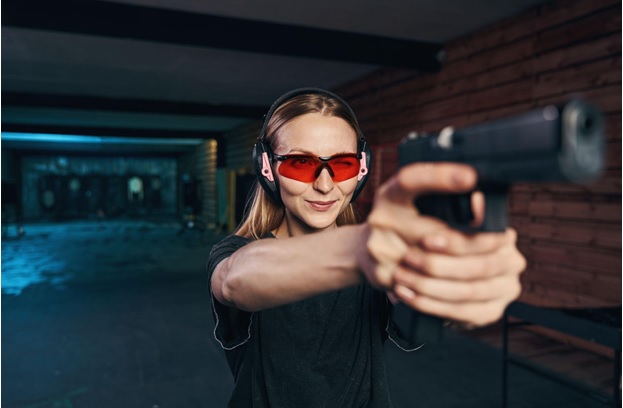Some handgun cartridges kick a lot harder than others. This much is for sure. Not that Remington Range 9mm is a particularly hard-hitter, but it sure kicks a lot harder than .22LR, right?
With respect to flinching, it doesn’t matter. If you flinch when shooting a .22 you’re still going to miss.
Here are three of our best tips to combat flinching when shooting.
Why We Flinch, and Why It’s a Problem
Flinching is a natural reaction to any startling stimulus. Loud noises, sudden actions, and other abrupt changes in our environment create a visceral reaction that often physically manifests as a flinch.
Your frame could shudder; your grip on the handgun might jerk; you might blink.
Often, this is an anticipation of recoil, rather than a response to it, and when you respond to recoil before it happens, that’s not good.
It means you’re pulling your sights off of whatever you’re aiming at. And that means you miss.
The good news is there are things you can do about it.
The Countdown
Countdown drills are intended to create a “surprise break,” which prevents the shooter from realizing the trigger is about to break - until it actually does.
It’s a bit of a stressful drill, especially for shooters that are particularly recoil-sensitive, but at the same time, can be highly effective at correcting the bad habit of flinching.
For this drill, it helps to have a partner, but you can do it alone. After loading and charging your handgun, aim it at the target and try to focus half on your front sight and half on the trigger.
Either start counting down yourself from 10 to 0 or have a partner count down for you. Your goal is to break the trigger before the countdown ends.
Chances are, the trigger will break after you’ve 6 or 7, which often comes as a surprise.
The reason this works is twofold. One is that it makes it difficult for you to tell when the trigger is going to break. The other is that counting down gives you something else to focus on besides when the trigger is going to break.
This often results in the trigger breaking and the gun firing without a flinch from the shooter, which is precisely what you want.
Blind Loading
For blind loading, you will need a partner. The basis of it is this: you have a partner load your magazines when you’re not looking. Somewhere in the mag, he or she needs to insert a snap cap or dummy round, but you can’t know where it is.
Have your partner do so, then take aim, and fire slowly and deliberately. At a certain point, your gun will chamber the snap cap and the gun won’t fire when the trigger breaks.
This is the point at which you will notice whether or not you are flinching. Did you move when you dropped the hammer on the snap cap? Did the gun jerk?
Drilling like this can coach you to be aware of your tendency to flinch which might not be fully evident when firing live rounds. Practice this drill until you no longer notice a flinch when you pull the trigger on the snap cap.
Dry-Fire Training
While these first two training drills are helpful, dry-firing training is probably the most beneficial training of all that you can and should practice to help you break the bad habit of flinching.
But first, a disclaimer. Dry fire training is inherently dangerous. Do not practice dry fire training anywhere except at the range and always keep the firearm pointed downrange. Make no exceptions to this rule.
For dry fire training, you will need snap caps or dummy rounds. Load them into your mag, then charge the gun, take aim at the target, and slowly and deliberately pull the trigger.
Ideally, your wrists and frame will not move at all when you hear the trigger break and the firing pin fall on the snap cap. If the gun moves at all, you’re flinching.
Practice this until you no longer can notice any semblance of a flinch whatsoever. Once you master the slow-dry fire technique, consider speeding up the cadence and charging and dry-firing quickly.
Speeding up can help you break the bad habit of involuntarily flinching, which can still linger after you’ve consciously stopped flinching when firing deliberately.

We Have the Advice and the Ammo
Hopefully, you find these tips to combat flinching helpful. For what it’s worth, you should also shoot a lighter caliber where possible. While you can’t change your gun’s chambering, you can shoot lighter rounds.
For instance, if your gun is chambered in 9mm, shoot a round that produces less muzzle energy. Compare the Remington Range 9mm Luger 115 grain FMJ to the FAE 9mm 124 grain FMJ ammo on our website. The Remington Range 9mm packs 335 ft-lbs of energy at the muzzle and the FAE delivers 364 ft-lbs.
This means the Federal American Eagle ammo kicks harder. Look for a lower muzzle energy, and shoot that, especially while you’re trying to break the habit of flinching. That’s the best choice for everyday shooting.

